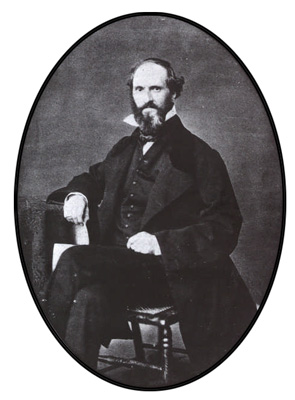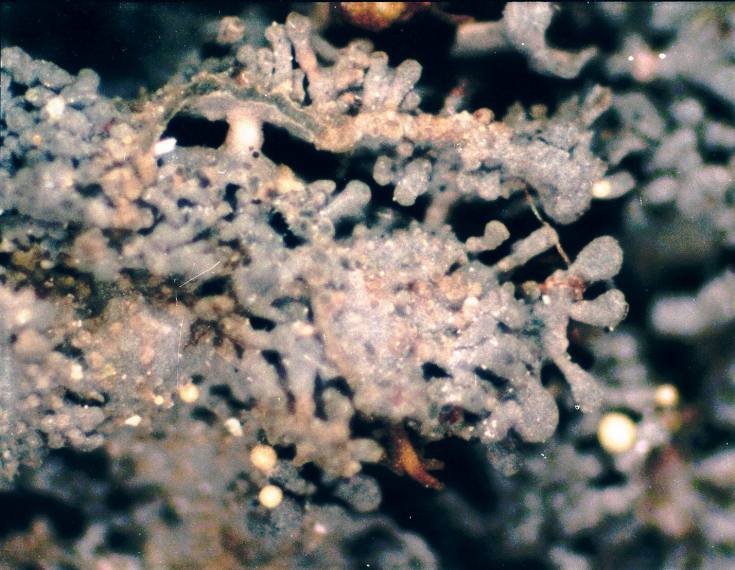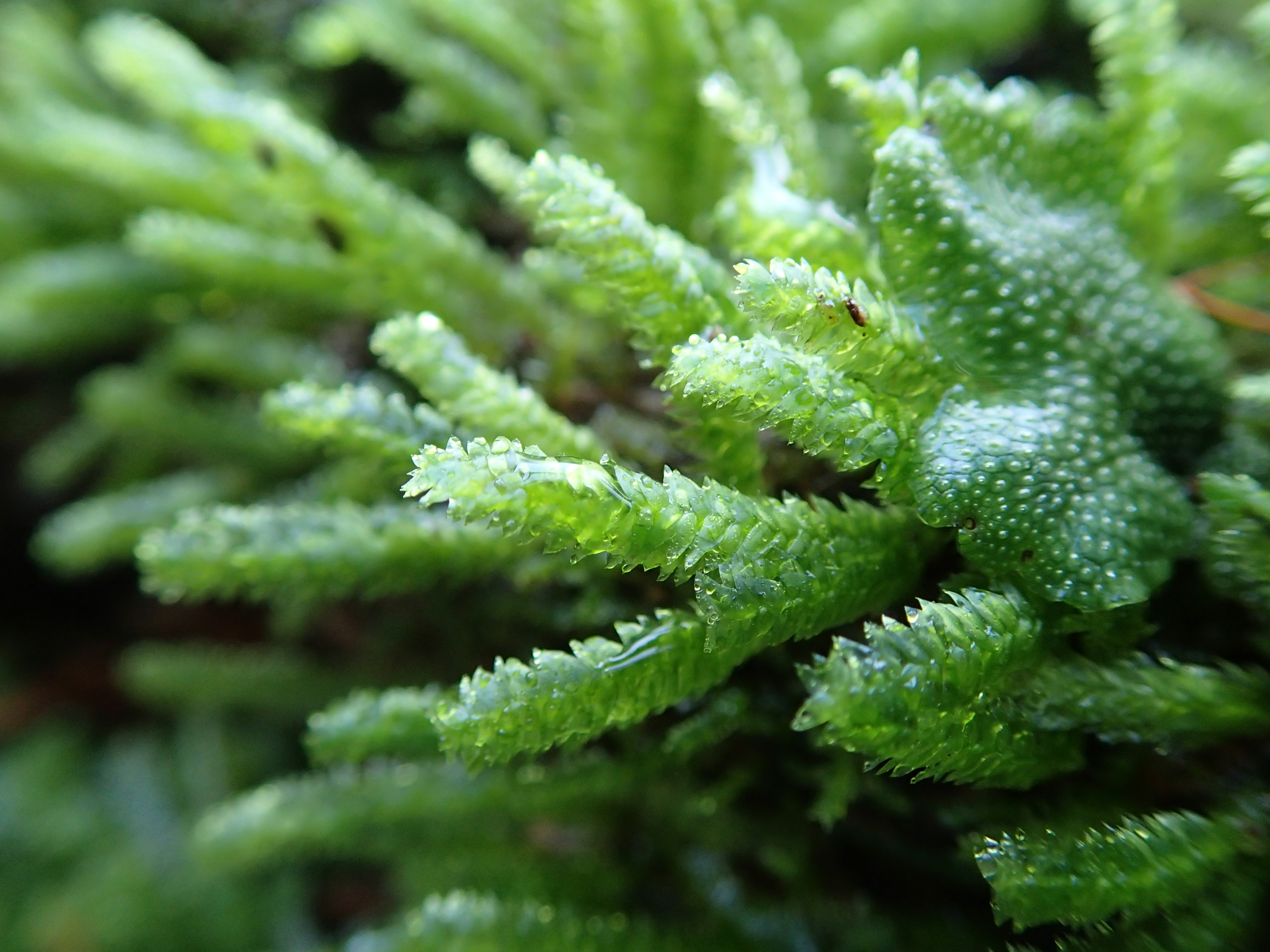|
Sprucidea
''Sprucidea'' is a genus of four crustose lichens in the family Malmideaceae. Similar to the related genus ''Malmidea'', ''Sprucidea '' is characterized by frequently red thallus, thalli that contain the secondary metabolite, secondary compound norsolorinic acid, but differs in the rod-shaped instead of ellipsoid ascospores and in the stalked sporodochia as conidiomata. ''Sprucidea'' species are found in rainforest areas in South America and Southeast Asia. Taxonomy ''Sprucidea'' was circumscription (taxonomy), circumscribed in 2017 by lichenologists Marcela Cáceres, André Aptroot, and Robert Lücking. ''Sprucidea granulosa, S. granulosa'' and the type species, ''Sprucidea rubropenicillata, S. rubropenicillata'', were species description, described as new to science, while ''Sprucidea gymnopiperis, S. gymnopiperis'' and ''Sprucidea penicillata, S. penicillata'' were two proposed new combinations from the genera ''Malmidea '' and ''Bacidina'', respectively. ... [...More Info...] [...Related Items...] OR: [Wikipedia] [Google] [Baidu] |
Sprucidea Granulosa
''Sprucidea'' is a genus of four crustose lichens in the family Malmideaceae. Similar to the related genus '' Malmidea'', ''Sprucidea '' is characterized by frequently red thalli that contain the secondary compound norsolorinic acid, but differs in the rod-shaped instead of ellipsoid ascospores and in the stalked sporodochia as conidiomata. ''Sprucidea'' species are found in rainforest areas in South America and Southeast Asia. Taxonomy ''Sprucidea'' was circumscribed in 2017 by lichenologists Marcela Cáceres, André Aptroot, and Robert Lücking. '' S. granulosa'' and the type species, '' S. rubropenicillata'', were described as new to science, while '' S. gymnopiperis'' and '' S. penicillata'' were two proposed new combinations from the genera ''Malmidea '' and '' Bacidina'', respectively. The genus name of ''Sprucidea'' is in honour of Richard Spruce (1817–1893), who was an English botanist specializing in bryology. He was one of the great Vict ... [...More Info...] [...Related Items...] OR: [Wikipedia] [Google] [Baidu] |
Malmideaceae
Malmideaceae is a family of crustose and corticolous lichens in the order Lecanorales. It contains eight genera and about 70 species. Taxonomy Malmideaceae was created in 2011 to accommodate a group of species, formerly placed in genus '' Malcolmiella'' (family Pilocarpaceae), that molecular phylogenetics showed to be a distinct lineage and worthy of recognition at the family level. The genus ''Savoronala'', containing the single African species '' S. madagascariensis'', was added to the family in 2013, while another monotypic genus '' Kalbionora'' was added in 2017. Description Malmideaceae is similar to Pilocarpaceae, but can be distinguished from that family by thallus organization and ascus structure. ''Malmidea'' species have a thallus made of goniocysts–spherical aggregations of photobiont cells surrounded by short-celled hyphae. This characteristic is quite rare in the Pilocarpaceae, only found in the monotypic genera '' Calopadiopsis'' and '' Pseudocalopadia''. ... [...More Info...] [...Related Items...] OR: [Wikipedia] [Google] [Baidu] |
Richard Spruce
Richard Spruce (10 September 1817 – 28 December 1893) was an English botanist specializing in bryology. One of the great Victorian botanical explorers, Spruce spent 15 years exploring the Amazon from the Andes to its mouth, and was one of the very first Europeans to observe many of the places where he collected specimens. Spruce discovered and named a number of new plant species, and corresponded with some of the leading botanists of the nineteenth century. Early life and career Richard Spruce was born near Ganthorpe, a small village near Castle Howard in Yorkshire. After training under his father, a local schoolmaster, Spruce began a career as a tutor and then as a mathematics master at St Peter's School in York between 1839 and 1844. Spruce started his botanical collecting in Yorkshire about 1833. In 1834, at age 16, he drew up a neatly written list of all of the plants he had found on trips around Ganthorpe, focusing on bryophytes. Arranged alphabetically and contain ... [...More Info...] [...Related Items...] OR: [Wikipedia] [Google] [Baidu] |
Malmidea
''Malmidea'' is a genus of crustose lichens and the type genus of the family Malmideaceae. It was established in 2011 to contain a phylogenetically distinct group of species formerly placed in the genus ''Malcolmiella''. The crust-like thallus of ''Malmidea'' lichens has a surface that varies from smooth to rough, featuring textures such as (wart-like), (grainy), or (pimpled). These textures are often formed by , which are spherical clusters of green algal cells from the family Chlorococcaceae, encased in fungal hyphae. ''Malmidea'' comprises nearly 70 mostly tropical species that grow corticolous lichen, on bark, although a few grow foliicolous lichen, on leaves. Taxonomy Both the family Malmideaceae and the genus ''Malmidea'' were created in 2011 to accommodate a group of species, formerly placed in genus ''Malcolmiella'' (family Pilocarpaceae), that molecular phylogenetics showed to be a distinct lineage (evolution), lineage and worthy of recognition at the family level. Kla ... [...More Info...] [...Related Items...] OR: [Wikipedia] [Google] [Baidu] |
Isidia
An isidium (plural: isidia) is a tiny, wart- or finger-like outgrowth on the thallus surface of certain lichen species. It is one of two principal types of vegetative reproduction, vegetative reproductive structures in lichens, the other being soredium, soredia. Each isidium contains both fungus, fungal and algae, algal partners and is wrapped in a thin protective layer (the ), distinguishing it from soredia, which lack this covering. While both function in vegetative reproduction, the heavier, corticate structure of isidia means they tend to establish in microhabitats close to the parent thallus, often favouring stable, humid niches where mechanical protection improves survival. Unlike spores, which are microscopic and easily carried over long distances by wind, isidia are larger, multicellular fragments that rely on external forces such as wind, rain, or animal contact, but typically disperse over much shorter ranges. Isidia are morphology (biology), morphologically diverse, ra ... [...More Info...] [...Related Items...] OR: [Wikipedia] [Google] [Baidu] |
Bacidina
''Bacidina'' is a genus of crustose lichens in the family Ramalinaceae. Taxonomy The genus was circumscribed by Czech lichenologist Antonín Vězda in 1990, with '' Bacidina phacodes'' assigned as the type species. Vězda included 11 species in ''Bacidina'', which was originally classified in the Lecideaceae. These species had previously been placed in genus '' Bacidia''. Description ''Bacidina'' species are crustose lichens, forming thin, often inconspicuous thalli that may be smooth, cracked, warted, or . Some species develop specialised reproductive structures such as soredia, isidia, or microsquamules. The thallus is typically pale in colouration, ranging from whitish and pale green to greyish or fawn. The photosynthetic partner () consists of algae, which have roughly spherical () to broadly ellipsoidal cells. The reproductive structures, or apothecia, are relatively small, usually up to 1 mm in diameter, and can be flat or strongly convex. They lack a distinct ... [...More Info...] [...Related Items...] OR: [Wikipedia] [Google] [Baidu] |
Bryology
Bryology (from Greek , a moss, a liverwort) is the branch of botany concerned with the scientific study of bryophytes (mosses, liverworts, and hornworts). Bryologists are botanists who have an active interest in observing, recording, classifying or researching bryophytes. The field is often studied along with lichenology due to the similar appearance and ecological niche of the two organisms, even though bryophytes and lichens are not classified in the same kingdom. History Bryophytes were first studied in detail in the 18th century. In 1717 the German botanist Johann Jacob Dillenius (1687–1747), later Sherardian Professor of Botany at Oxford from 1734 to 1747, produced the work "Reproduction of the ferns and mosses". The beginning of bryology really belongs to the work of Transylvanian-born Johannes Hedwig (1730–1799), sometimes called the "father of bryology", who clarified the reproductive system of mosses in 1782 in his ''Fundamentum historiae naturalis muscorum frond ... [...More Info...] [...Related Items...] OR: [Wikipedia] [Google] [Baidu] |
Corticolous Lichen
A corticolous lichen is a lichen that grows on bark.Alan Silverside's Lichen Glossary (a-f), Alan Silverside/ref> This is contrasted with lignicolous lichen, which grows on wood that has had the bark stripped from it,Alan Silverside's Lichen Glossary (g-o), Alan Silverside/ref> and saxicolous lichen, which grows on rock.Alan Silverside's Lichen Glossary (p-z), Alan Silverside/ref> Examples of corticolous lichens include the crustose lichen Crustose lichens are lichens that form a crust which strongly adheres to the Substrate (biology), substrate (soil, rock, tree bark, etc.), making separation from the substrate impossible without destruction. The basic structure of crustose lichen ... '' Graphis plumierae'', foliose lichen '' Melanohalea subolivacea'' and the fruticose '' Bryoria fuscescens''.Náttúrufræðistofnun Íslands celandic Institute of Natural History(1996). Válisti 1: Plöntur.' (in Icelandic) Reykjavík: Náttúrufræðistofnun Íslands. See also * Phyllopsora ... [...More Info...] [...Related Items...] OR: [Wikipedia] [Google] [Baidu] |
André Aptroot
André Aptroot ( Heemskerk, 1961) is a Dutch mycologist and lichenologist. His primary research focus is on biodiversity, particularly tropical lichens, encompassing systematics, floristic surveys, and taxonomic reviews. A prolific researcher, he has published more than 500 scientific papers and described hundreds of new fungal and lichen species. Career In 1993 he did his PhD at the University of Utrecht under the supervision of Robbert Gradstein (nl). His dissertation was titled "Systematic studies on pyrenocarpous lichens and related fungi". He specializes in fungi and lichens on which he has several hundreds of publications to his name. He has worked as curator at Centraalbureau voor Schimmelcultures (now Westerdijk Institute). Aptroot is the founder of the ''Adviesbureau voor Bryologie en Lichenologie – Herbarium'' (Consultancy for Bryology and Lichenology), which is located in Soest where there is a herbarium with a collection of lichens mainly from the Ne ... [...More Info...] [...Related Items...] OR: [Wikipedia] [Google] [Baidu] |



